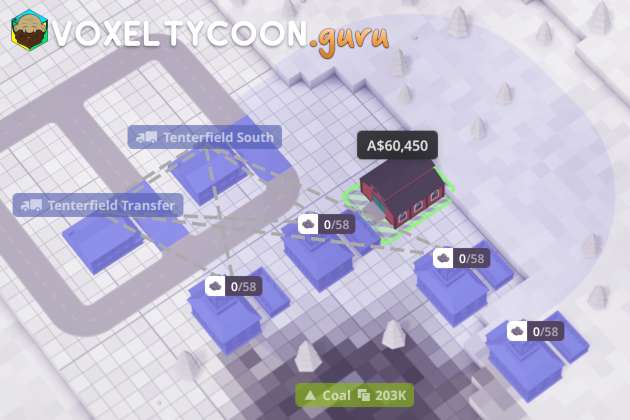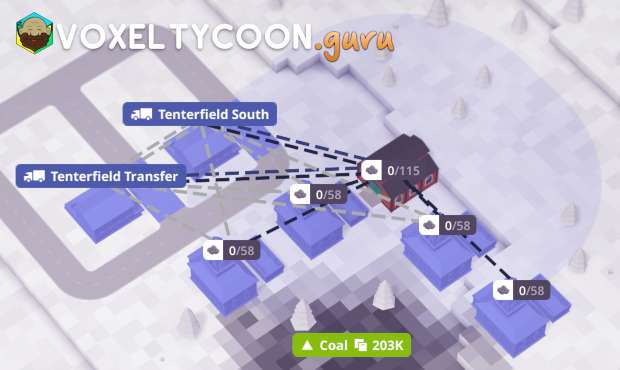Overview
Warehouses are used throughout the game for purposes such as:
- Collecting resources from multiple mining facilities
- Load and unload storage for trucks and trains
- Supplying and receiving product via conveyor belts for production lines
There are two types of warehouses:
- Warehouse
- Small
- Storage Capacity = 58
- Large
- Storage Capacity = 115
- Loading time = 0.58s (1.7 p/s) (103.4 p/m)
- Small
- Warehouse II
- Small
- Storage Capacity = 86
- Large
- Storage Capacity = 172
- Loading time = 0.43s (2.3 p/s) (139.5 p/m)
- Small
Placement / Connections

- A warehouses connects to surrounding buildings that are logistically connected, such as mines and freight stations
- These logistic connections are automatically created and require no additional physical infrastructure for them to be connected, they just need to be within the allowed range of each other
- In the screenshot above you can see the warehouse is able to connect to all four mines and the two freight stations

- In the screenshot above you can see that the warehouse can connect to ALL coal mines and freight stations
- In the previous screenshot you can also see that Tenterfield Transfer does NOT have a logistics connection to the furthermost coal mine
- This is one of the strengths of warehouses, they can collect cargo that is out of reach of the freight stations and supply it to them
What A Warehouse CANNOT Do
- Warehouses CANNOT supply goods to businesses via logistic connections, these MUST be supplied via transport
- This can be confusing initially when using trains, use the train to transport goods to a warehouse and then vehicles / smaller trains to transport the goods to the businesses
Further Information
- The Logistic Throughput article goes into much deeper discussion about item transfer rates